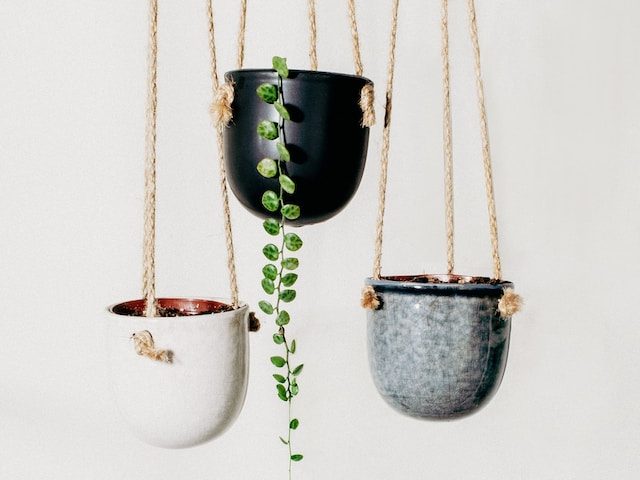
Basic Bird’s Nest Fern Care
This tropical fern gets its name from being able to grow on top of other plants, much like a bird’s nest. Below you will find everything you need to know to care for a Bird’s Nest Fern and keep it happy and healthy!
| Light |
Bright Indirect LightI love the sunshine but too much direct light will damage my leaves. |
| Water |
Water ModeratelyI don’t like my soil to be too dry or too soggy. Little and often is what I’m after. |
| Humidity |
Medium HumidityPlease make sure the air isn’t too dry, otherwise I won’t be a happy plant. |
| Soil |
Potting SoilI need soil specifically for indoor plants as it retains the right amount of water. |
They can survive in most light conditions
One great thing about Bird’s Nest Ferns is that they can deal with anything from medium light to bright indirect light. The only thing you want to avoid is direct light as this can scorch the leaves on your fern.
Let the soil dry out between waterings
You want to make sure the soil has enough time to dry out between waterings. This will be about once a week during summer but less during the colder months.
Bird's Nest Ferns like high humidity
As they are native to tropical areas, Bird’s Nest Ferns thrive in high humidity. We recommend using a humidifier to help boost humidity around your fern. They will grow in the average humidity in your home but won’t like particularly dry air.
Average room temperature is fine
You don’t need to worry too much about temperature and your Bird’s Nest Fern as it will be happy in normal room temperature.
Don't water directly onto the plant
When watering your Bird’s Nest Fern try not to water directly onto the leaves, but instead into the soil. This prevents harming any new leaves that are emerging as they are super delicate. It also prevents any leaf rot.
Fertilise once a month during the growth period
We recommend fertilising your Bird’s Nest Fern once a month during spring and summer using a water soluble fertiliser. Weaken it more than it says on the label to prevent fertiliser burn.
Only repot when the fern is unstable
Bird’s Nest Ferns don’t tend to become rootbound so the only reason you will want to repot your fern is if it becomes unstable and starts leaning or falling over.
Propagating your Bird's Nest Fern is a little different
You might be used to the main propagation methods of other houseplants but it is different for Bird’s Nest Ferns. These use spores which you propagate in a moist environment such as peat moss.
Bird's Nest Fern are safe for pets and humans
If you have a pet or child in your home then you don’t need to worry about having them around your Bird’s Nest Fern as they are completely safe.

Bird's Nest Fern FAQs
Quick and simple answers to the most common questions we see about the Bird's Nest Fern.
Can Bird's Nest Ferns grow indoors?
Yes, although this is a tropical fern, they can adapt really well to a variety of environments and thrive in your home if the care is right.
Are Bird's Nest Fern plants toxic?
No, Bird’s Nest Ferns are actually safe and completely non-toxic.
Are Bird's Nest Ferns easy to care for?
Because they have quite thin, delicate leaves, the Bird’s Nest Fern can actually be a little fussy to care for. The number one thing is high humidity so get into the routine of misting to prevent brown leaf tips.
Common Problems with your Bird's Nest Fern
Here are some common issues that you might run into. It's important to diagnose any issues early to give your plant the best chance of bouncing back.
Why does my Bird's Nest Fern have yellow leaves?
There are two common reasons why Bird’s Nest Ferns develop yellow leaves: too much direct sunlight or overwatering. Check the spot in which your fern is sat to see what the light levels are like. Then check the moisture levels in the soil to see if it is waterlogged. Replace the potting mix if needed and trim away the yellow leaves.
Why has my Bird's Nest Fern gone really light in colour?
Especially light coloured leaves on a Bird’s Nest Fern often means it’s not getting enough water. Check the soil before making any adjustments to your watering schedule to see if the potting mix feels dry. Slowly reintroducing watering so you don’t shock your plant by drowning it in water suddenly. The leaves should begin to return to normal soon.
Why does my Bird's Nest Fern have crispy brown leaves?
Brown crispy leaves on a Bird’s Nest Fern is caused by either underwatering or dry air. Check the moisture in the soil to determine if it needs more water. If humidity is the issue then start by misting your plant regularly, buying a humidifier to use near your plant or moving it to the bathroom or kitchen where the natural humidity level is higher.














